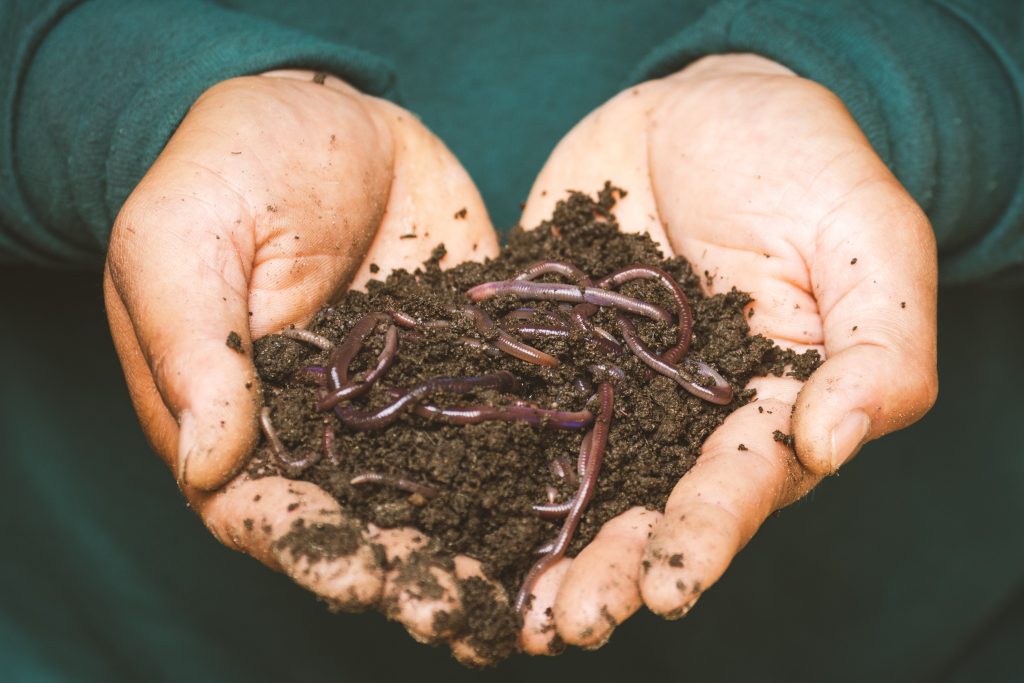This year make your classroom a place that includes red wiggler worms to help your students become part of the waste-free generation. A worm bin or vermicomposter provides an ideal method to compost unwanted food. These little incredible eaters will yield pounds of rich sweet-smelling compost for the school’s plants and nature garden. And as they each have five pairs of hearts, you gotta love ‘em!
Vermicomposting is a growing business and there are now many suppliers listed on the Internet who will put together a complete worm bin kit that includes bedding, red wigglers and fact sheets. Many even have regular email newsletters or blogs.
MAKE YOUR OWN WORM BIN
If you wish to make your own worm bin, you will need to drill holes in a container, shred lots of newspaper, dampen it with water (tap water must sit out for two days to allow the chlorine to evaporate) and add a handful of soil. This mixed together makes a nice bedding which should be as damp as a wrung-out sponge. Set your one pound of red wigglers on top and watch them burrow inside their new home.
Allow the red wigglers to settle in for a couple of days before starting to feed them apple cores and other organic food. Research all the foods that are acceptable. For instance, it is better to compost citrus fruit peelings in a backyard composter.
DOS & DON’TS
As red wigglers—whose castings are known as the Cadillac of finished compost—live in a confined area, it is important to keep their environment free of certain foods that they do not enjoy or that may cause problems. For instance, the pH levels of the bin cannot become too acidic so it is best not to include orange peels. Also, worms breathe through their skin and certain types of food will irritate that process. Research revealed that they love pumpkins. If your students carve a Jack O’Lantern, the stringy inner pulp is ideal to add to a worm bin, but the tough outer shell, unless chopped very small, is best put into the school’s outdoor composter.
To keep your new classroom residents healthy, appoint one or two students each week to be responsible for your vermicomposter’s well-being. As worms do not like to be disturbed, it is best to gather the food scraps in a sealed container and deposit the contents into the bin once or twice a week. The weekly monitor(s) can be responsible to check moisture and, if too wet, add shredded pulp paper egg cartons, cardboard or newspaper. Test that the bedding does not become compacted. Chop food pieces smaller if necessary. Remove anything they feel isn’t suitable. See that the worms are not overfed. Deposit food under a layer of bedding. Sprinkle in crushed eggshells.
Composting advocate, David Horton who recently began Verminational, educates students in Ontario’s Kawartha area. He likes to elaborate on this idea,“Have you ever heard it said that some people have a ‘one track mind?’ Well, worms have a ‘three track mind.’ They like to eat; their temperature to be cool; and to keep reproducing. As you know, worms are hermaphrodites, each having both reproductive parts, male and female; therefore, to encourage high reproductive rates with many offspring, don’t feed them onions or garlic!”
Okay, so a pound of worms isn’t a lot of fun as a resident pet, but you can study their many benefits in other subjects as well, such as:
- Draw cartoons.
- Decorate the worm bin as a banquet hall, chalet, hotel or castle.
- Sell worm castings to the school community as a fundraiser.
- Prepare students to seek environmental solutions.
- Because worms are prolific, students can make more bins and demonstrate the concept to other classes.
- Create a story, poem, or play with worms as the theme.
- Everyone stand and take turns naming something that can be composted. Sit down if you cannot think of anything that has not already been mentioned.
- Castings from the bin will provide a rich fertilizer for the school’s indoor plants and nature garden.
- Discover where different worms live. Determine how they get to other parts of the world.
- Early American presidents shared compost information regarding the need to preserve the earth’s fertility. Read the works of Darwin. Cleopatra considered worms sacred. There exists an ancient Chinese symbol meaning “Worms are Angels of the Earth.”
- Calculate the weight of the worm bin at different stages of the bedding’s decomposition and graph the results.
- Charles Darwin used to play music to his worms. They ate during the high notes and went underground when low notes were played.
- Make announcements regarding events such as Valentine’s Day and Hallowe’en parties from a worm’s point of view.
- Place a worm in the centre of a brown paper towel with one-half damp. Observe which side the worm prefers.
- The task of harvesting castings (by screening the soil) offers an opportunity to merge students of diverse ages and abilities. Children will enjoy finding worm cocoons, sprouting seeds and rotting veggies.
- List organic materials that can be composted.
- In addition to the responsibility of caring for live creatures, students should be less noisy for the sake of the worms. Also, junk food snacks, often in non-recyclable packaging, decrease as health foods become preferable in order to feed the classroom pets.
Larraine Roulston
Larraine Roulston writes children’s adventure books that combine composting facts with literature. Visit www.castlecompost.com
This article is from Canadian Teacher Magazine’s Spring 2020 issue.

